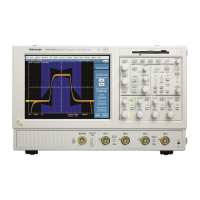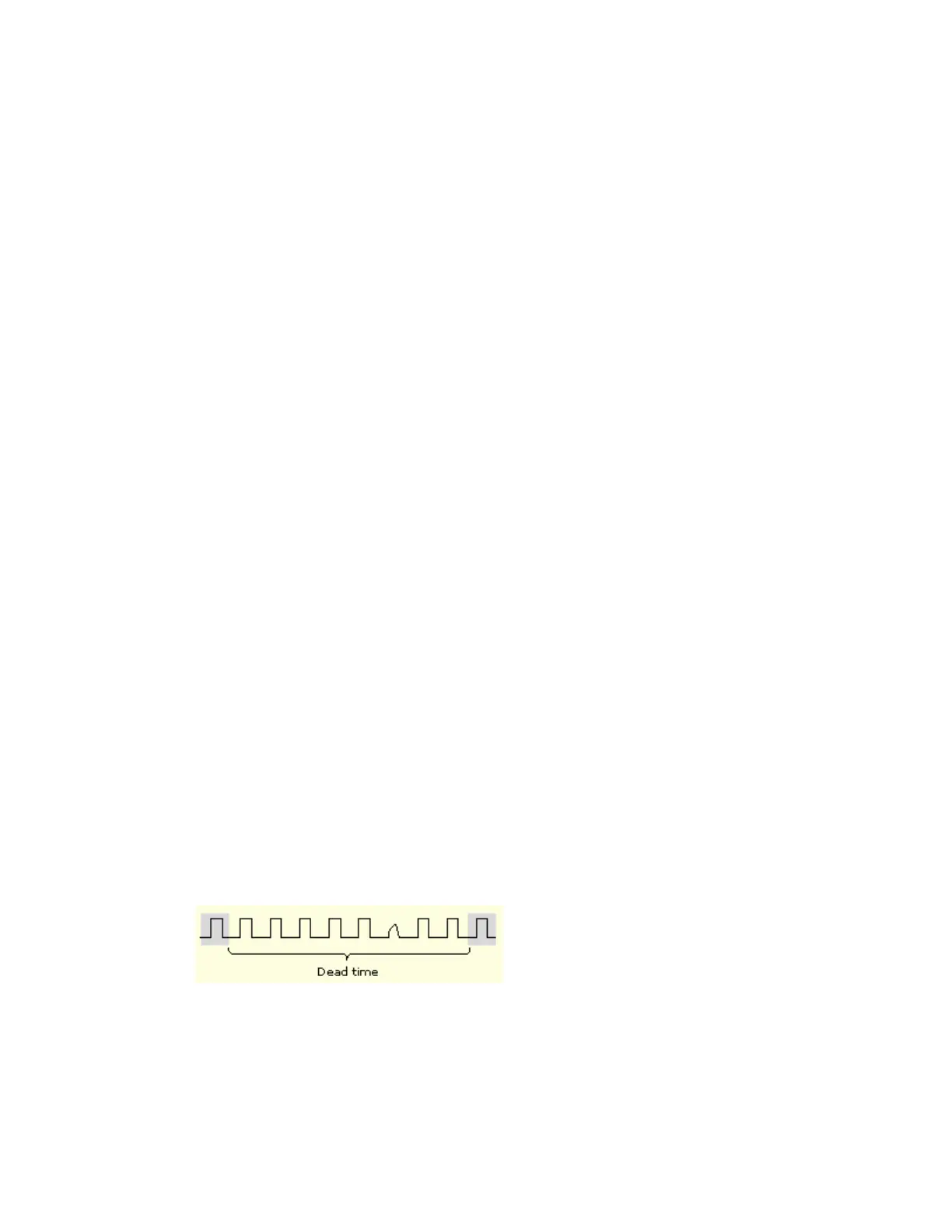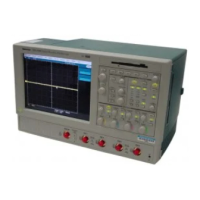393
Trigger When
To qualify the trigger for Window triggering, select from these drop-down list combinations:
Inside Limits and
Occurs or
Outside Limits
and Occurs
Trigger the instrument when the signal enters (or leaves) the
window defined by the threshold levels.
Inside Limits and
Wider or Outside
Limits and Wider
Trigger the instrument when the signal enters (or leaves) the
window defined by the threshold levels for the time specified by
Width.
Inside Limits and
Logic or Outside
Limits and Logic
When the instrument detects a signal entering or leaving the
window defined by the threshold levels, it checks the logic state
of up to two other available channels and triggers only if their
conditions are met. Each channel can have a value of high (H),
low (L), or "don't care" (X). A value is considered high if the
channel input voltage is greater than the specified threshold
voltage; a value is considered low if the channel input voltage is
less than the specified threshold voltage. Use the "don't care"
selection for any channels that will not be used as part of the
pattern.
Note
The Logic qualification option is only available on the
4-channel models.
Trigger Width Limits
To trigger on a pulse width outside a range of limits, select Outside from the Trig When drop-
down list and set the Upper Limit and Lower Limit with the multipurpose knobs. To trigger on a
pulse width within a range of limits, select Inside from the Trig When drop-down list and set
Upper Limit and Lower Limit with the multipurpose knobs or pop-up keypad. The graphic in the
control window shows the criteria that you have selected.
Typical DSO Acquisitions
Upper and Lower Threshold Levels
Use the upper and lower threshold levels to measure the transition time as shown in the trigger
graphic. To adjust the upper threshold level, click Upper Level and then use the multipurpose
knob to set the voltage level. To adjust the lower threshold level, click Lower Level and then use
the other multipurpose knob to set the voltage level.

